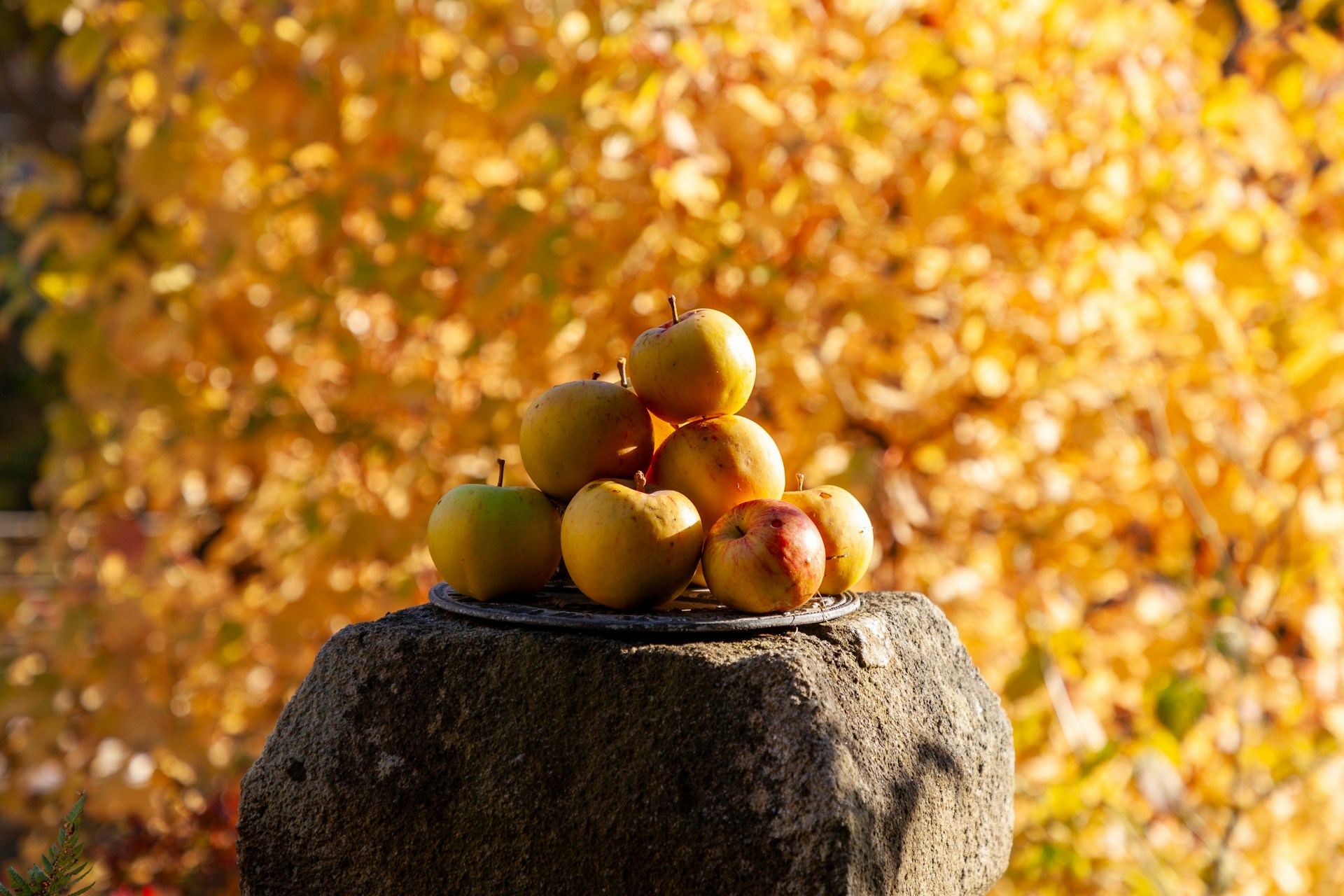October is a crucial month in the English garden because Autumn is here. For the gardener, this is the final push of tidying and planting before winter dormancy sets in. It’s a busy time, focusing on preparation, protection, and planting for the following spring.
Preparation and Protection
The most urgent task is to protect tender plants from the first expected frosts. You never know when they will arrive! Lift half-hardy tubers like dahlias, cannas, and begonias from the ground, clean off the soil, and store them in a dry, frost-free place, such as a shed or cool greenhouse. Any potted tender plants, including citrus and pelargoniums, should be moved to a sheltered location.
Tidy up borders by cutting back the dead foliage of herbaceous perennials, though many gardeners choose to leave some seedheads—such as those on Sedum or grasses—for winter structure and to provide food for birds.
Regularly rake and clear fallen leaves from lawns and patios. Leaving them on the grass can smother it, while on hard surfaces they can become dangerously slippery. Convert the bulk of these leaves into leaf mould, an excellent soil conditioner, by stuffing them into bin bags with a few drainage holes or into a dedicated wire cage.
Planting for the Future
October is the prime time to plant spring-flowering bulbs. Get your daffodils, crocuses, and alliums in the ground this month, as well as a selection of tulips, to ensure a stunning display come spring. Plant them at two to three times their own depth.
In the vegetable patch, plant garlic cloves and overwintering onion and shallot sets. They need a cold period to develop good bulbs and will reward you with an early summer crop. Hardy varieties of broad beans and peas can also be sown now in milder regions for a head start next spring.
Maintenance and Tidying
Give the lawn its final cut of the season, raising the blades a little higher than usual. If you have any bare patches or plan to lay new turf, the soil conditions in October are ideal. This is also a good month to apply a low-nitrogen autumn lawn feed to strengthen the roots.
Finally, take the opportunity to divide congested perennial clumps like daylilies and hostas. Lift them, split the root ball into smaller sections, and replant them. This rejuvenates the plants and gives you more for free. Ensure all your tools are cleaned and oiled before putting them away for the winter.
Photo by Darren Richardson on Unsplash

